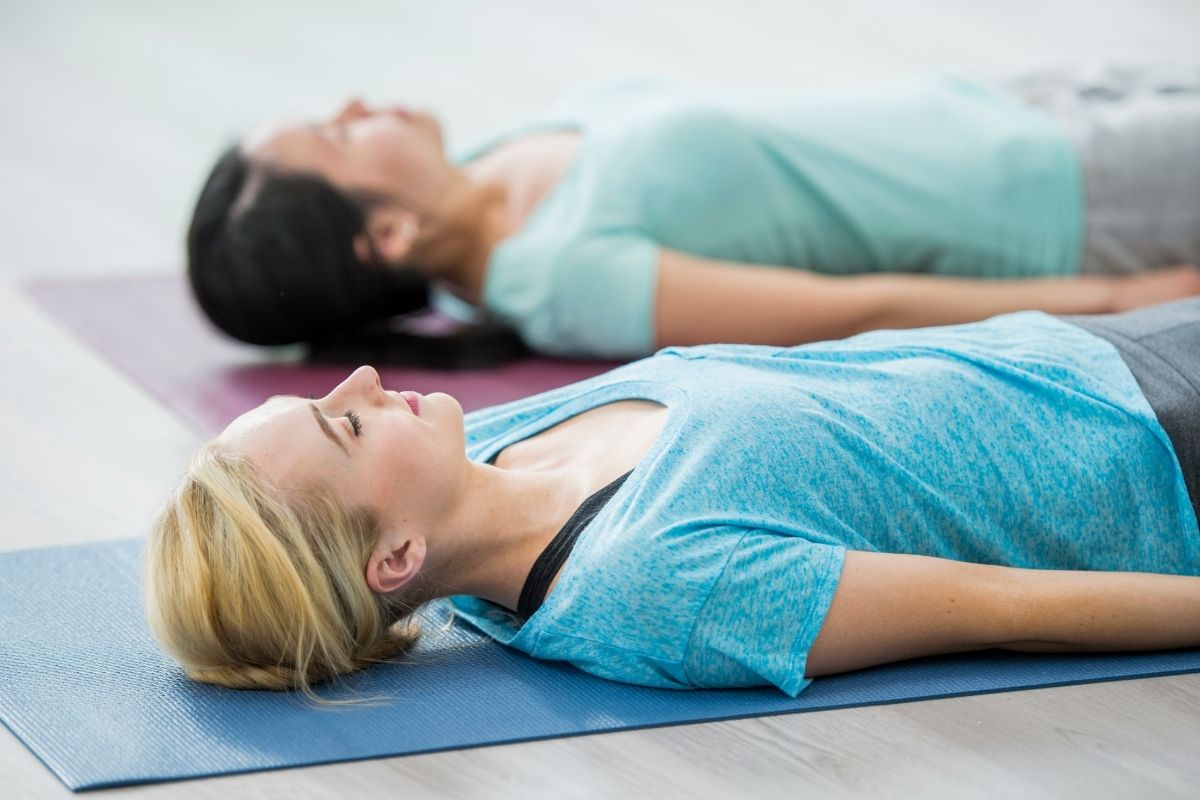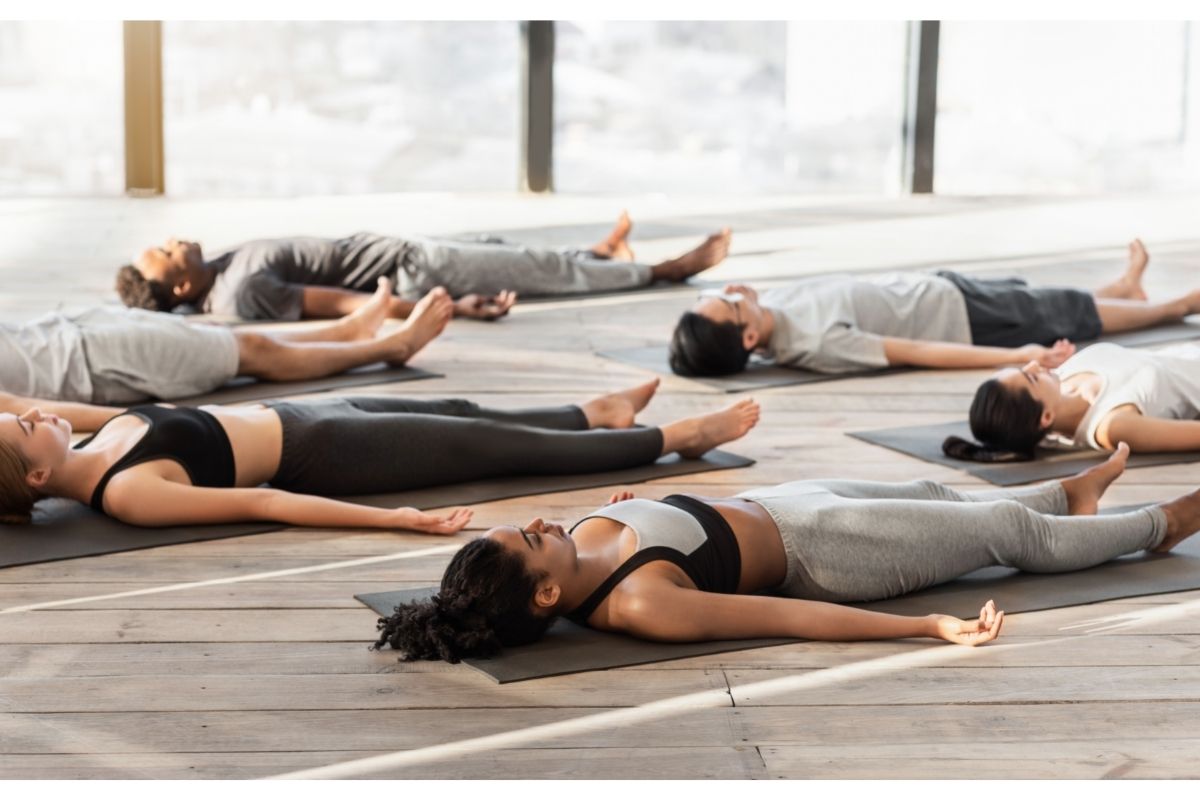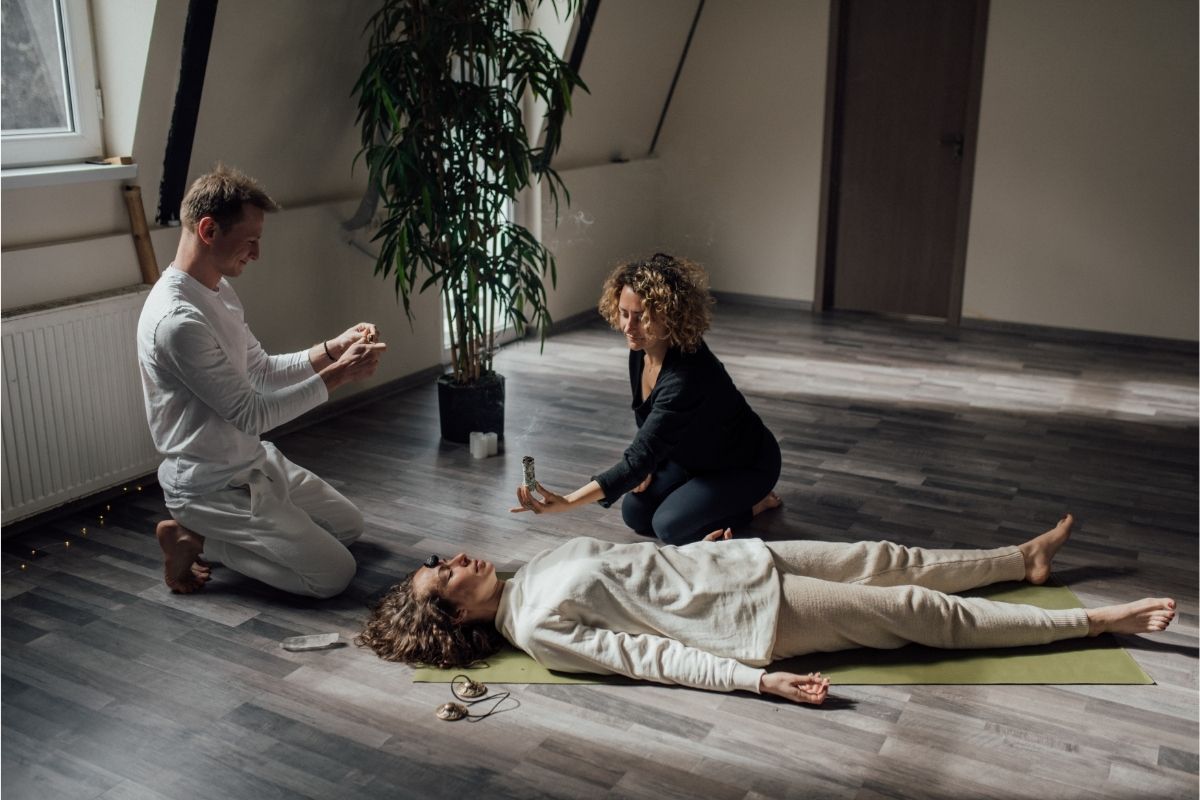Can You Meditate Lying Down?

Horizontal Zen: The Surprising Truth About Meditating While Lying Down
Yes, you absolutely can meditate lying down!
It’s like discovering your favorite comfy chair is actually a portal to inner peace.
Picture this: you’re snug as a bug, flat on your back, mind drifting.
Surprise! You might already be deep in meditation mode.
Forget those images of cross-legged gurus on mountaintops.
Meditation is for everyone, including you, right there on your cozy bed.
In fact, lying down to meditate could be your secret weapon for relaxation.
It’s perfect if sitting makes your back scream or if you’re just plain pooped.
Stick around, and I’ll spill the tea on why horizontal meditation might become your new BFF.
You’ll discover cool techniques, bust some myths, and maybe even revolutionize your chill-out game.
Trust me, by the end of this, you’ll be itching to try a lie-down meditation session!
Comfort is King: Why Lying Down Works Wonders
Let’s get real: if meditation feels like torture, you’ll ditch it faster than last year’s fashion.
It’s like forcing yourself to eat kale when you’re craving pizza – it just doesn’t stick!
Here’s a little secret: **comfort is the magic ingredient** to making meditation a habit.
If sitting cross-legged makes you feel like a human pretzel, forget about it!
Did you know only 8% of meditation newbies stick with it long-term?
But here’s the kicker: those who find a comfy position are 3 times more likely to keep at it!
For folks with cranky backs or old injuries, lying down isn’t just nice – it’s a game-changer.
Pain is like a pesky pop-up ad for your brain. Lying down helps slam that “close” button.
Some meditation styles actually prefer the horizontal position.
It’s like they found a cheat code for instant relaxation!
The secret sauce? An elongated spine.
It’s all about letting energy flow freely, like traffic without any red lights.
So if sitting up straight feels like balancing a book on your head, lying down might be your express ticket to Zen town.
Horizontal Meditation Menu: Pick Your Flavor
Ready to try some lying-down meditation?
Here’s your buffet of options – pick what makes your mouth water!
Savasana: The Art of Playing Dead (In a Good Way!)
Ever heard of Savasana? It’s yoga-speak for “corpse pose.”
Don’t freak out – it’s way more fun than it sounds!
Here’s the recipe:
1. Lie on your back like a starfish.
2. Let your arms chill by your sides, palms up.
3. Imagine your shoulders melting into the floor.
4. Let your feet flop outwards.
It’s like making a snow angel, minus the snow and the effort.
Body Scanning: Your Personal Energy Tour
This one’s like giving your body a high-five, one part at a time.
It’s perfect for when you’re lying down and feeling loosey-goosey.
Here’s how to do it:
1. Start at your toes.
2. Slowly move your attention up your body.
3. Notice any tingles, warmth, or buzzy feelings.
By the end, you’ll feel like you’ve had an internal spa day!
Curious about how this mind-body connection works? Check out this fascinating article on what “mind over matter” really means. It’s like discovering a superpower you didn’t know you had!
Sleep Meditation: Snooze Your Way to Zen
Ever conk out while meditating? Congrats, you’ve just stumbled upon sleep meditation!
Here’s a jaw-dropping fact: 1 in 3 adults don’t get enough shut-eye.
Sleep meditation can be your secret weapon against those sleepless nights.
It’s like a lullaby for your brain, helping you drift off to dreamland.
You can use it at bedtime or for power naps during the day.
Speaking of healing, want to supercharge your meditation skills? Dive into this awesome guide on how to meditate for healing. It’s like a first-aid kit for your mind and soul!
Semi-Supine: The Goldilocks of Lying Down
Not quite flat, not quite sitting – it’s just right!
Think of it as the recliner chair of meditation poses.
Give this a whirl:
1. Lie down with your knees bent.
2. Or prop your upper body up with a pillow.
3. Keep your spine in its natural curve.
4. Let everything else relax like a wet noodle.
It’s perfect for those who want the best of both worlds!
The Bottom Line: Your Meditation, Your Rules
Here’s the scoop: lying down to meditate isn’t just okay, it’s awesome!
It’s like finding out you can wear pajamas to a fancy dinner and still be the coolest cat there.
Remember, meditation is about what’s happening in your mind, not your body.
Whether you’re sitting, standing, or doing cartwheels, it’s all good!
Mix it up! Try lying down one day, sitting the next.
It’s like having a meditation wardrobe – options for every mood and occasion!
This guide is perfect for:
– Meditation newbies scared of pretzel poses
– Anyone with a cranky back or fidgety legs
– Insomniacs looking for a ticket to Sleepytown
– Stressed-out folks who just want to chill, literally
So next time you’re feeling zen-curious, why not try a horizontal session?
Who knows, your couch might just become your new meditation headquarters!
Your Burning Questions, Answered!
Help! I Keep Dozing Off During Lying Meditation. What Can I Do?
Try keeping your peepers open!
It’s like leaving a light on to stay awake during a movie marathon.
How Do I Do This Lying Down Mindfulness Thing?
First, ditch the distractions. No phones, no beeping gadgets.
Then, focus on your breath. Feel the air whooshing in and out of your nose.
It’s like watching waves at the beach, but it’s your breath!
What’s the Deal with Guided Meditation While Lying Down?
Pick a soothing voice recording you like.
Get comfy on your bed or floor.
Focus on the voice like it’s telling you a bedtime story.
For extra relaxation, turn off the lights. It’s like a spa, but free!
Feeling anxious about trying something new? Don’t worry, it’s totally normal. For some extra help, check out this great article on what part of the brain causes anxiety. Understanding your brain can be the first step to calming it down!

Author: Michelle Landeros, LMFT
Michelle Landeros is a Licensed Marriage Family Therapist (LMFT). She is passionate about helping individuals, couples and families thrive.





